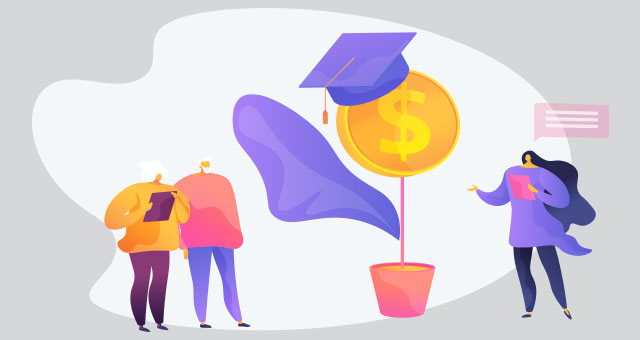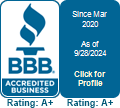
It Is Official: Student Loan Payment Pause to End This Fall: Here is What to Know.
The student loan payment freeze has been in effect since the Coronavirus Assistance, Relief, and Economic Security (CARES) Act on March 27, 2020. After three years and nine extensions, this will end this fall.
The Supreme Court rejected the Biden administration’s debt forgiveness scheme dashing many people’s expectations for relief in their student loan burden. The court ruled 6-3 on June 30, 2023, that the government lacked the power to forgive up to $20,000 in federal student loans per borrower, and all borrowers of federal student loans will have to begin making monthly loan payments.
Due to a clause in the debt ceiling agreement agreed by Congress on June 2, there is no chance of any more payment halt extensions. Therefore, about 44 million Americans will have to start making student loan payments this fall. Also, those who graduated from college in 2020 or after that must prepare for their first-ever student loan installments.
However, in addition to pursuing a backup plan, Biden promised to take time to set up the necessary funding. It could take more than a year to implement this strategy.
Here are the essential details about student loan repayments.
When Will Student Loan Payments Resume Again?
Student loan interest will restart on September 1, 2023, and payments will start in October, according to a notification that the DOE published on its website on June 13.
Although the date of payment to be made, in October, was not specified in the Department of Education press release, it was probably 1 October.
The DOE stated in a news release that it will “notify borrowers well before payments restart and that borrowers will receive notice at least 21 days before a payment’s due date, along with details regarding the payment’s amount and due date.
However, in a recent poll conducted, by U.S. News & World Report, just 30% of borrowers reported knowing when their payments will resume. And over half (46%) said they are not in a financial position to start making payments on their student loans once more.
How to Prepare For Student Loan Repayment?
Identify & Contact Your Loan Servicer
For starters, you should contact your loan servicer to confirm the specifics of your loan. However, a separate company could be in charge of your account because some corporations left the student loan industry during the epidemic. The Consumer Financial Protection Bureau estimates that more than 40% of borrowers may have to deal with a new servicer.
To find out who is currently managing your federal student loans, log onto your Student Aid account at StudentAid.gov. Also, you can contact the Federal Student Aid Information Centre at 1-800-433-3243.
Ensure all of your contact information is up-to-date before creating or logging onto your StudentAid.gov profile. You may then check your principal loan balance, accrued interest, and payment schedule. Your loan servicer may also need you to re-enroll in automatic payments.
Set up a budget.
Your finances have probably altered quite a bit if you took a vacation from paying your student loans during the relief period. Set aside time to establish a budget that details your monthly income and expenses. Look for places where you may cut back if your budget is too tight, or consider starting a side business to supplement your income.
Consider An IDR (Income-Driven Repayment Plan)
Consider an IDR plan if you cannot afford your new monthly student loan payments. These programs prolong student loans, lengthening the time it takes to pay them off, but they also make monthly payments more bearable and keep borrowers from skipping payments or defaulting. The primary IDR programs are:
- Saving on a Valuable Education (SAVE) Plan, formerly known as REPAYE
- PAYE (pay as you earn).
- Income-based repayment program (IBR)
- Income-contingent repayment program (ICR)
Research Other Forgiveness Programs
Examine your eligibility for additional forgiveness programs, such as Public Service Debt Forgiveness (PSLF) or teacher debt forgiveness. Visit StudentAid.gov to examine the many types of repayment programs.
Get To Know Your New Monthly Payment.
According to the StateAdvance, if you are on a standard repayment plan, your loan servicer may modify your monthly payment based on your existing balance and the remaining repayment timeline. Updates on loan payments can be found on the Student Aid website.
If you already have an IDR plan, payments will usually resume where they left off before the interruption, barring any changes to your plan or recertification.
Initiatives to Make Student Debt More Manageable
Three significant initiatives implemented by the Biden administration to make student debt repayment more manageable are:
1. The SAVE Repayment Plan
President Biden unveiled the new SAVE plan right after the Supreme Court ruled that the loan debt reduction scheme was unconstitutional. The plan is essentially a redesign of the Revised Pay as You Earn (REPAYE) plan. Instead of 10% with REPAYE, it will restrict monthly payments to 5% of discretionary income. According to the Education Department, the SAVE plan will lower many borrowers’ monthly student loan payments by at least $100.
Miguel Cardona, the Secretary of Education, declared during a news conference that debtors making under $33,000 per year will have their monthly payments lowered to zero.
The SAVE plan has some components that are now in place, while others won’t be until July 2024. The Department of Education debuted a beta version of the new SAVE plan on July 31, 2023. It assured applicants that applications filed in the summer of 2023 will be handled “in time for your first payment due date” in October.
Further, the White House announced that student borrowers who have signed up for the current REPAYE plan will automatically be enrolled in the SAVE plan once implemented.
Log on to the FSA website for eligibility criteria and other information.
2. Fresh Start Program
The Biden administration has launched a “fresh start” program for debtors whose student loans were in default before the emergency forbearance. You can enter a program that usually only occurs once to restore your loans to good standing.
Additionally, you will be relieved of the burden of collections, which means you won’t have to worry about collection calls or the garnishment of your paychecks, tax refunds, or Social Security payments.
After the federal payment freeze is lifted, the Fresh Start program will continue for one year.
Call 1-800-621-3115 (the TTY number is 1-877-825-9923) to speak with your loan holder about the Fresh Start program, or log into your account at myeddebt.ed.gov.
3. 12-Month On-Ramp To Repayment (For Federal Student Loans)
The Biden Administration further proposed a 12-month “on-ramp transition period” for debtors unable to make regular payments. It offers borrowers 12 months to develop a strategy for taking care of their debts without having to worry about late or missed payments reported to credit bureaus, sent to collections, or the loans defaulting.
If borrowers skip payments, interest will accumulate. However, they will not have to pay late fees or fines and will not damage their credit. Missed payments do not, however, count towards student debt forgiveness for income-driven repayment or Public Service Debt Forgiveness, unlike the student loan stop period.
Since interest on your student loans will still accrue throughout this time, paying more than the minimum amount due will save you money on interest fees.
Bottom Line
Before receiving your first bill, make a student loan payment plan on how you will pay it. If you wait until your payments restart, it will be challenging for your servicer to assist you with your payment options.


